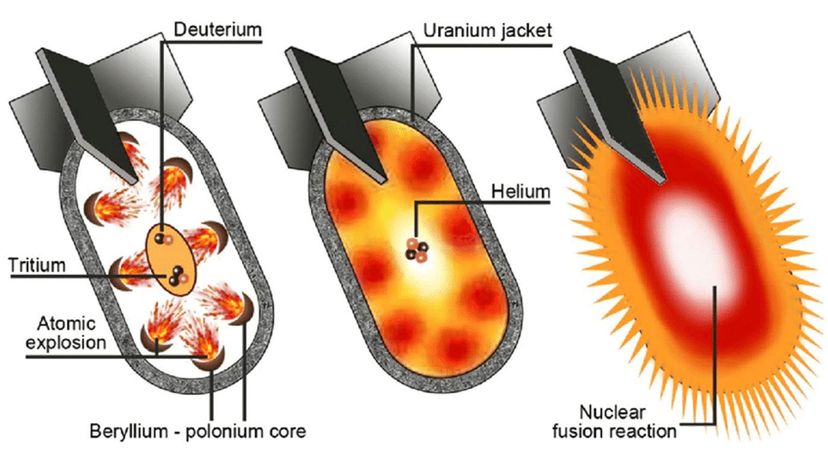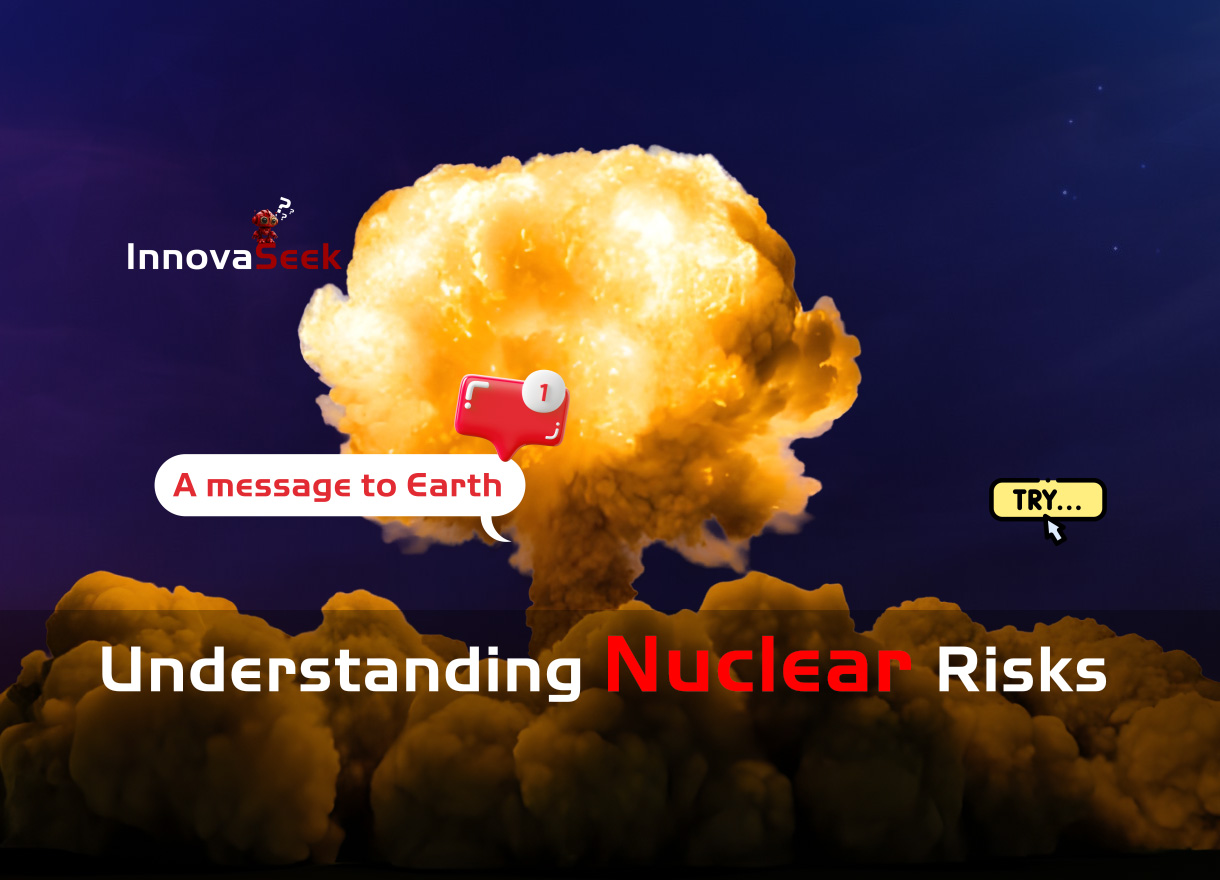
A message to Earth : Understanding Nuclear Risks
Navigating the complexities of nuclear threats and empowering ourselves with knowledge for a more secure tomorrow.
A message to Eart

Key Insights for a Safer Future
- Beyond the Blast: Nuclear risks extend far beyond immediate explosions, encompassing long-term environmental and societal challenges like “nuclear winter” and global famine.1
- Gamma Ray Awareness: Understanding gamma rays – a highly penetrating form of radiation – is crucial for effective personal protection strategies.2
- The Power of Three: Protection from radiation relies on simple yet effective principles: minimizing time of exposure, maximizing distance from the source, and utilizing dense shielding.3
- Global Responsibility: While individual preparedness is important, the ultimate safeguard against nuclear conflict lies in international cooperation, diplomacy, and disarmament efforts.
As of June 13, 2025, the subject of nuclear risks remains a vital global conversation. From the perspective of nations worldwide, including our own communities, like those here in Tunisia, understanding these complexities is not about fear, but about empowerment. This article aims to demystify the realities of nuclear threats, shed light on the specific challenges posed by radiation, and highlight actionable knowledge for collective and individual safety. Our goal is to foster a proactive approach to building a more resilient and peaceful future.
The Landscape of Nuclear Risks: Beyond the Immediate
When we consider nuclear risks, it’s natural to think of the immediate, powerful explosions. While undeniably devastating, a comprehensive understanding reveals a broader spectrum of challenges that could profoundly impact our planet and societies.
Understanding the Ripple Effects
A nuclear incident, whether accidental or intentional, triggers a cascade of events:
- Initial Impact: The direct effects include intense heat, powerful blasts capable of leveling structures, and an initial burst of ionizing radiation.4 Even a limited event could cause significant casualties and local destruction.5
- Environmental Shifts (Nuclear Winter): A larger-scale exchange could ignite widespread fires, sending massive amounts of smoke and soot into the upper atmosphere.6 This “nuclear winter” scenario would block sunlight, leading to a drastic global temperature drop, altering weather patterns, and severely impacting agriculture.7
- Food Security Challenges: The resulting climate changes would jeopardize global food production. Crop failures due to reduced sunlight, altered precipitation, and colder temperatures could lead to widespread famine, potentially affecting billions.
- Ecological Disruptions: Ecosystems would face immense stress, threatening biodiversity and causing long-term environmental damage. Contamination of soil and water from radioactive fallout would further disrupt food chains and pose ongoing health risks.8
- Societal Strain: Critical infrastructure – from communication networks to transportation and healthcare systems – would be severely impacted.9 This could lead to a significant breakdown in societal structures, complicating humanitarian aid and recovery efforts.

Navigating the Invisible: Understanding Gamma Rays
Among the various forms of radiation released during a nuclear event, gamma rays are particularly noteworthy due to their high energy and penetrating power.10 Originating from atomic nuclei during radioactive decay or nuclear explosions, they are a form of electromagnetic radiation, similar to X-rays.11
The Impact on Living Systems
Gamma rays can travel considerable distances and easily pass through most materials, including human tissues.12 When they interact with biological systems, they can ionize atoms, disrupting chemical bonds and generating free radicals.13 This process leads to cellular damage:
- DNA Damage: Crucially, gamma rays can damage DNA, the genetic material within our cells.14 This damage can lead to cellular dysfunction, uncontrolled growth (cancer), or cell death.15
- Acute Radiation Syndrome (ARS): Exposure to high doses can cause ARS, a severe illness with symptoms ranging from nausea and vomiting to weakened immune systems and organ failure.16
- Long-Term Health Concerns: Even lower-level exposure increases the risk of various cancers over time, including leukemia and solid tumors. Genetic mutations are also a possibility.
It’s important to remember that the effects of gamma radiation are cumulative; the longer the exposure, or the higher the dose, the greater the risk.17 This radiation is present during the initial event and persists in radioactive fallout.

Practical Preparedness: Principles of Protection
While the scope of nuclear risks is vast, understanding fundamental principles of radiation protection can significantly enhance individual and community safety. These principles are universally applicable, whether you are in Tunisia or elsewhere in the world.
The Foundational Three: Time, Distance, Shielding
Protection from gamma rays and other forms of radiation hinges on three core concepts:
- Time: Minimize Exposure Duration
- The less time spent near a radiation source, the lower the absorbed dose.18 In an emergency, this means quickly seeking shelter and limiting time outdoors in potentially contaminated areas.
- Distance: Maximize Separation
- Radiation intensity decreases dramatically with distance from the source.19 Evacuation away from blast zones and identified contaminated areas is crucial.
- Shielding: Utilize Dense Barriers
- Dense materials absorb or deflect radiation.20 For gamma rays, which are highly penetrating, substantial and high-density shielding is essential. Materials with high density and atomic numbers are most effective.
Effective Shielding Materials: A Practical Look
For real-world protection, certain materials offer significant defense against gamma rays:
- Lead (Pb): Recognized as highly effective due to its high density (11.34 g/cm3) and atomic number. It efficiently absorbs and scatters gamma ray photons.
- Concrete: A widely available and practical material.21 While less dense than lead (approx. 2.3−2.4 g/cm3), its thickness makes it effective. Approximately 6.6 feet (2 meters) of concrete can significantly reduce typical gamma ray levels.22
- Tungsten: Another dense metal (19.25 g/cm3) that offers excellent shielding, often used in specialized applications.23
- Steel and Earth/Soil: These materials also provide good shielding, especially when used in significant thicknesses, such as in underground structures or bunkers.24
| Material | Density (g/cm3) | Relative Shielding Effectiveness (Qualitative) | Typical Application for Shielding |
| Lead | 11.34 | Excellent | Medical facilities, industrial radiography, personal protective gear |
| Tungsten | 19.25 | Excellent | Aerospace, medical devices, high-precision industrial shielding |
| Concrete | 2.3 – 2.4 | Very Good (with sufficient thickness) | Nuclear reactors, fallout shelters, building construction |
| Steel | 7.85 | Good (with sufficient thickness) | Industrial shielding, structural components |
| Earth/Soil | 1.5 – 2.0 | Moderate (with significant thickness) | Underground bunkers, trenches, emergency shelters |
Immediate Protective Measures: Your Action Plan
In the rare event of a nuclear incident, immediate action is critical:
- Seek Immediate Shelter: Get “inside, stay inside, and stay tuned.” Basements, underground structures, or the interior of large, thick-walled buildings offer the best protection from fallout.25
- Decontamination: Upon entering shelter, carefully remove and bag contaminated outer clothing. Wash any exposed skin with soap and water to reduce internal radiation exposure.
- Secure Supplies: Do not consume food or water that may have been exposed to fallout. Rely on pre-stored, sealed supplies.
- Stay Informed: Monitor official communications from authorities (if available) for guidance on safety, evacuation, or when it’s safe to emerge.
- Medical Guidance: If exposed, seek medical attention as soon as safely possible. Follow medical advice regarding countermeasures like potassium iodide (KI) pills, which can protect the thyroid gland from radioactive iodine, but should only be taken under guidance.26
Collective Action: Global Prevention and Diplomacy
While individual preparedness is crucial, the most effective path to a safer future lies in global prevention. The current geopolitical landscape highlights the importance of renewed focus on this vital area.
Pathways to Peace and Security
- Diplomacy and Arms Control: Fostering open international dialogue, upholding, and strengthening existing arms control agreements, and pursuing verifiable reductions in nuclear arsenals are paramount to de-escalating tensions.
- Education and Awareness: Continuously raising global awareness about the profound consequences of nuclear war, and the specific dangers of radiation, builds a collective understanding and support for disarmament efforts.
- Technological Safeguards: Implementing robust security protocols to prevent unauthorized access, accidental launches, or miscalculations involving nuclear weapons is absolutely essential.
- International Cooperation: Collaborative efforts among nations to prevent proliferation, address regional conflicts, and promote peaceful resolutions are foundational to reducing nuclear risks.27
Frequently Asked Questions (FAQ)
Q1: Can “nuclear winter” really happen, or is it just a theory?
A1: Scientific models and climate simulations strongly suggest that a large-scale nuclear war could indeed lead to “nuclear winter.”28 The massive smoke and soot from widespread fires would block sunlight, causing a drastic, prolonged global temperature drop, which would devastate agriculture and lead to widespread famine.
Q2: What are the “three principles” of radiation protection?
A2: The three core principles are time (minimize exposure duration), distance (maximize separation from the source), and shielding (use dense materials as barriers).29 Adhering to these significantly reduces radiation exposure.30
Q3: What’s the best material to shield against gamma rays?
A3: Lead is considered the most effective material for shielding against gamma rays due to its high density and atomic number, allowing it to efficiently absorb radiation.31 Other effective materials include concrete and tungsten, especially when used in sufficient thicknesses.
Q4: How would global health systems cope with a nuclear war?
A4: Unfortunately, global health systems would be completely overwhelmed and likely collapse in the aftermath of a nuclear war. The sheer scale of casualties, infrastructure destruction, and long-term health crises would far exceed any existing disaster response capabilities, making a robust medical response virtually impossible.
Conclusion: Our Shared Responsibility
The goal of “Building a Safer Future: Understanding Nuclear Risks” is to shift the narrative from fear to informed action. By understanding the multifaceted nature of nuclear threats, the specific dangers of radiation like gamma rays, and the practical steps for individual and collective protection, we empower ourselves. From our homes in Tunisia to communities across the globe, our shared future depends on a sustained commitment to diplomacy, education, and preparedness. It’s a collective responsibility to advocate for a world free from nuclear weapons, ensuring a more resilient and peaceful tomorrow for generations to come.
Recommended Further Reading:
- Understanding the humanitarian impact of nuclear weapons (ICAN – International Campaign to Abolish Nuclear Weapons)
- Principles of Radiation Protection (NCBI)
- The Science Behind Nuclear Winter (Bulletin of the Atomic Scientists)
- Global Nuclear Disarmament Efforts (UN Press)
A message to Eart




